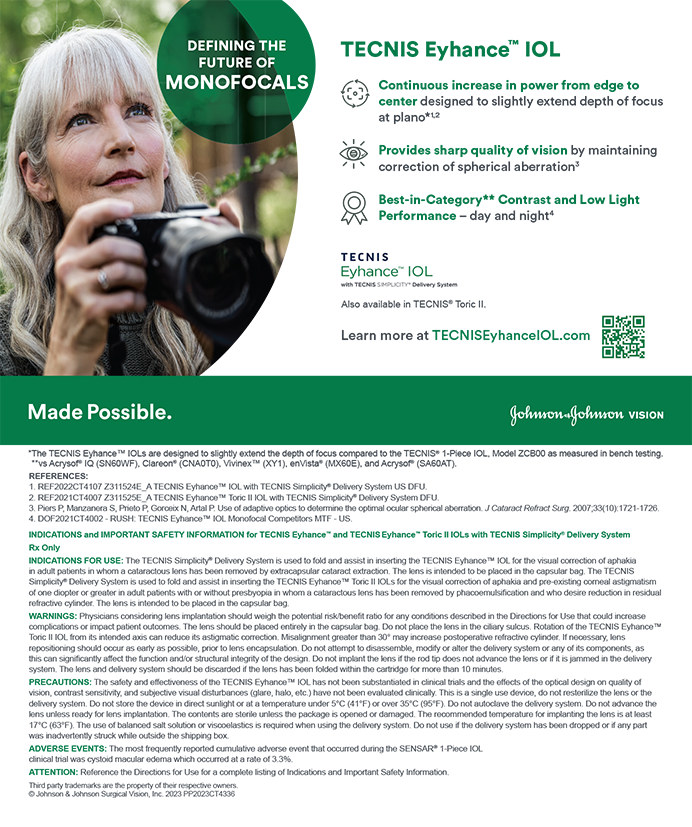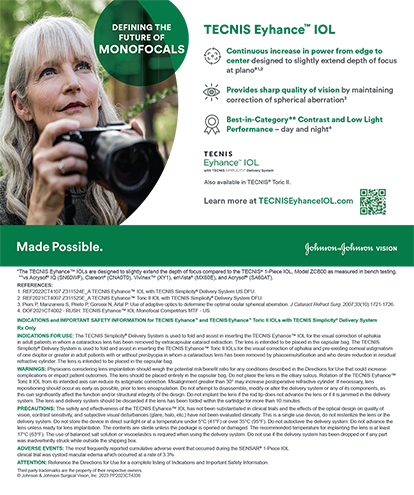How did you become involved in refractive surgery? Twenty years ago, while taking an undergraduate biomedical engineering class, I realized that I would much rather be dealing with people and helping them, as a physician. I also knew that I would be able to use my engineering experience to develop new and better ways of doing things. My undergraduate focus was on using lasers for signal processing. I decided I'd rather use lasers to perform surgery on people. Two years later, while in medical school, I started working on excimer laser corneal surgery. It is interesting that my way into medicine was a way into refractive surgery that wasn't even a specialty at that time.
What do you find most challenging in your field? In academic ophthalmology, trying to see patients, perform surgery, do research, and teach, all at the same time is rather challenging. Clinically speaking, the challenge is to keep obtaining better results for patients. Reducing the rate of enhancements, keeping patients happy, and meeting their expectations are important challenges as well.
What are you currently researching? I am working on the concept of trying to restore accommodation. I am looking at using an ultrashort pulse laser to modify the elastic properties of the crystalline lens. The laser works by focusing a very small amount of energy to a very high peak power that can be placed inside the lens. The plasma effect and small cavitation bubble produced helps to ablate a small volume of tissue and separate the bonds that form as a lens becomes more sclerotic with age. By putting the proper pattern of laser light into the crystalline lens, you may be able to restore the accommodative mechanism lost in presbyopia.
Tell us about your study on the picosecond laser.
The picosecond laser was clearly a forerunner to the femtosecond laser. In the mid-1990s, I was looking at using picosecond lasers to remove corneal tissue intrastromally, and perform refractive surgery without breaking the epithelium. This only partially worked because the width of the laser pulse and resulting cavitation bubbles were not small enough. The femtosecond laser, having a pulse that is over 100 times smaller, is now successfully achieving both intrastromal ablation and lamellar separation. It is now going to be possible to use the laser to make flaps for LASIK, and after they are healed, to go back with customized intrastromal ablation to correct any residual myopia, hyperopia, astigmatism or aberrations, without ever breaking through the epithelium. What is true of intrastromal ablation of the cornea, in my opinion, will also be possible in the lens.
What do you enjoy the most about your specialty? I have always been fascinated in working with lasers. In addition, I enjoy developing relationships with my patients. As part of my work ethic, I see the majority of my patients postoperatively. I don't just perform the surgery and let someone else do the follow-up. When my patients tell me how pleased they are with their surgical outcomes, this truly makes it a rewarding experience.


